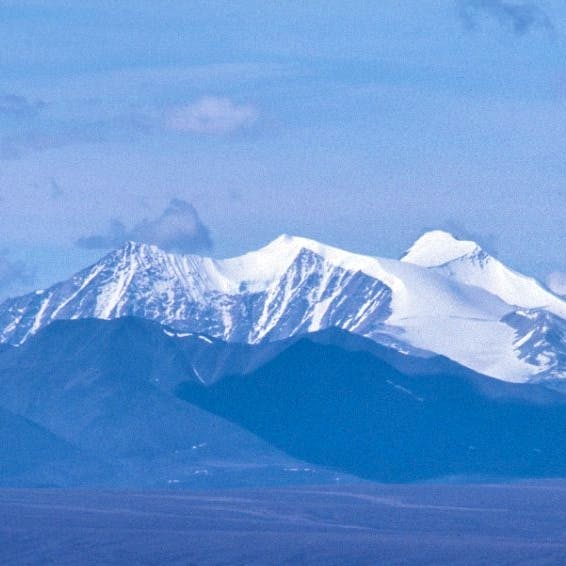Conservation groups file formal notice of intent to sue for the pint-sized pygmy owl
TUCSON, Ariz. (March 22, 2012) - The Center for Biological Diversity and Defenders of Wildlife today sent the U.S. Fish and Wildlife Service a formal notice of intent to sue over the agency’s denial of Endangered Species Act protection to the rare and vanishing cactus ferruginous pygmy owl. The groups petitioned to restore the tiny owl’s “endangered” status across the Sonoran Desert of Arizona and northern Mexico in 2007. Although the agency acknowledged that the pygmy owl faces many threats in the Sonoran Desert and that the region is important to the species as a whole, it denied the petition in October 2011.
Today the Arizona population of fewer than 50 birds is perilously small, and pygmy owls in northern Sonora, Mexico are in decline, according to recent surveys.
“There’s no question that the pygmy owl needs Endangered Species Act protection to survive in the Sonoran Desert of Arizona and Mexico,” said Noah Greenwald, primary petition author and endangered species director at the Center for Biological Diversity, which has been working to protect pygmy owls for 20 years. “The pygmy owl is an indicator for the health of the Sonoran Desert — save this tiny owl and you save the desert, too.”
The agency’s denial of protection for the pygmy owl is based on a proposed policy that sets a very high bar for when species that are endangered in portions of their range can receive protection. The Endangered Species Act defines an endangered species as any “in danger of extinction in all or a significant of portion of its range,” meaning that a species need not be at risk everywhere it occurs to qualify for protection. Under the proposed policy, species that are endangered in portions of their range like the pygmy owl only qualify for protection if loss of that portion threatens the survival of the species as a whole. This is a much higher threshold than has been used before.
Although the policy has not yet been finalized, the agency relied on its reasoning to reverse course and deny the pygmy owl protection. In a draft finding obtained through a Freedom of Information Act request, the agency determined that the Sonoran Desert qualified as a “significant portion of its range” and therefore the pygmy owl warranted protection. In particular, the agency found that Sonoran Desert pygmy owls are important to the adaptability of the species overall because they occur in a hotter, drier setting and thus may be better able to adapt to a warming world. Following development of the new proposed policy, however, the agency reversed course and determined that loss of pygmy owls from the Sonoran Desert would not endanger the species as a whole and denied protection.
“This irresponsible decision essentially sets the pygmy owl on a steady path to extinction in the U.S. Southwest,” said Jason Rylander, staff attorney with Defenders of Wildlife. “The bald eagle and grizzly bear would never have received protection under the Endangered Species Act if the same policy had been applied to them when they were first considered for listing. We expected more from the Obama administration. This wrongheaded decision should be reversed.”
The pygmy owl was previously protected as an endangered species in Arizona in 1997 following a 1992 Center petition. In 2003, a federal court ordered the U.S. Fish and Wildlife Service to better explain its decision that the Arizona population is “distinct” from birds in Mexico, and in 2006, the agency removed protections. As acknowledged by Fish and Wildlife, threats across the Sonoran Desert from urban sprawl, invasive species, fire, drought and other factors are severe. The conservation of dwindling pygmy owl populations in southern Arizona was the initial impetus for the development of Pima County’s landmark Sonoran Desert Conservation Plan, which has received broad public support and is currently being finalized.
“Sonoran Desert pygmy owls are unique and deserve our care,” said Greenwald. “Protection of the pygmy owl has proven to be a benefit to the people of southern Arizona by helping to preserve native Sonoran desert habitats that are a source of solace and joy for many.”
###
Contact(s)
Noah Greenwald, Center for Biological Diversity, (503) 484-7495
James Navarro, Defenders of Wildlife, (202) 772-0247
Defenders of Wildlife is dedicated to the protection of all native animals and plants in their natural communities. With more than 1 million members, supporters and subscribers, Defenders of Wildlife is a leading advocate for innovative solutions to safeguard our wildlife heritage for generations to come. www.defenders.org
For over 75 years, Defenders of Wildlife has remained dedicated to protecting all native animals and plants in their natural communities. With a nationwide network of nearly 2.1 million members and activists, Defenders of Wildlife is a leading advocate for innovative solutions to safeguard our wildlife for generations to come. To learn more, please visit https://defenders.org/newsroom or follow us on X @Defenders.
News
Image

Defenders Slams Trump Interior Pick Burgum
Trump made known that he intends to nominate North Dakota Governor Doug Burgum to lead the Department of Interior, giving authority of the nation’s public lands, wildlife and natural resources to a leading advocate of oil and gas drilling.
Image

Defenders Opposes Proposed Illegal Land Exchange in Izembek National Wildlife Refuge
Conservation groups are outraged today by a Department of the Interior’s proposal released today to trade away congressionally-designated wilderness lands within the Izembek National Wildlife
